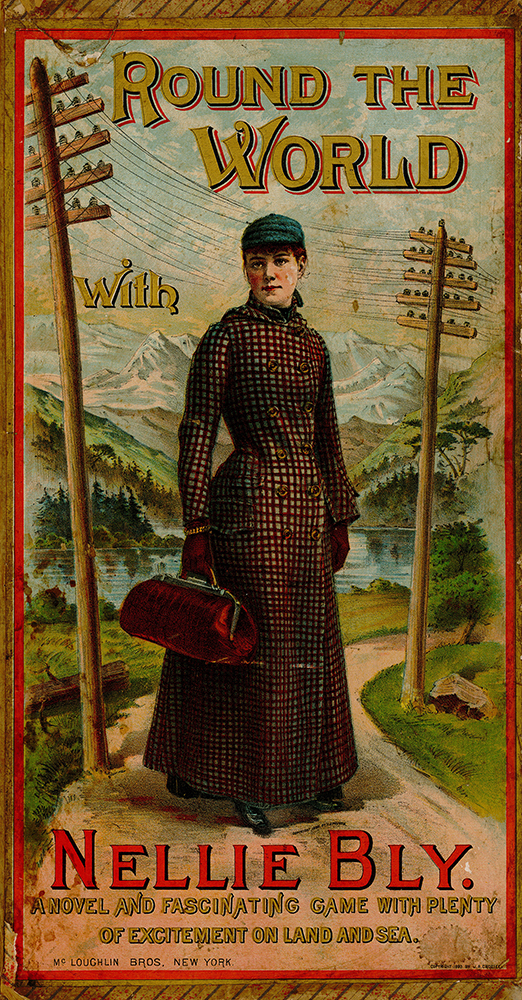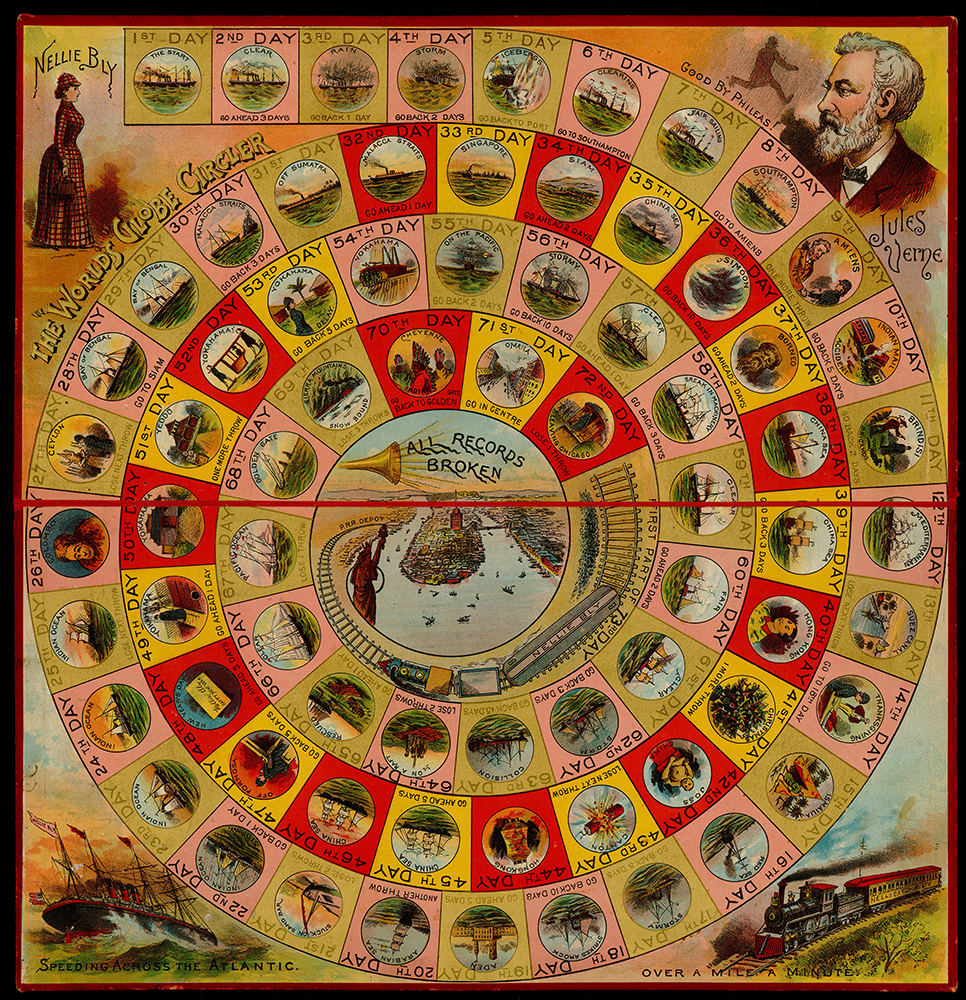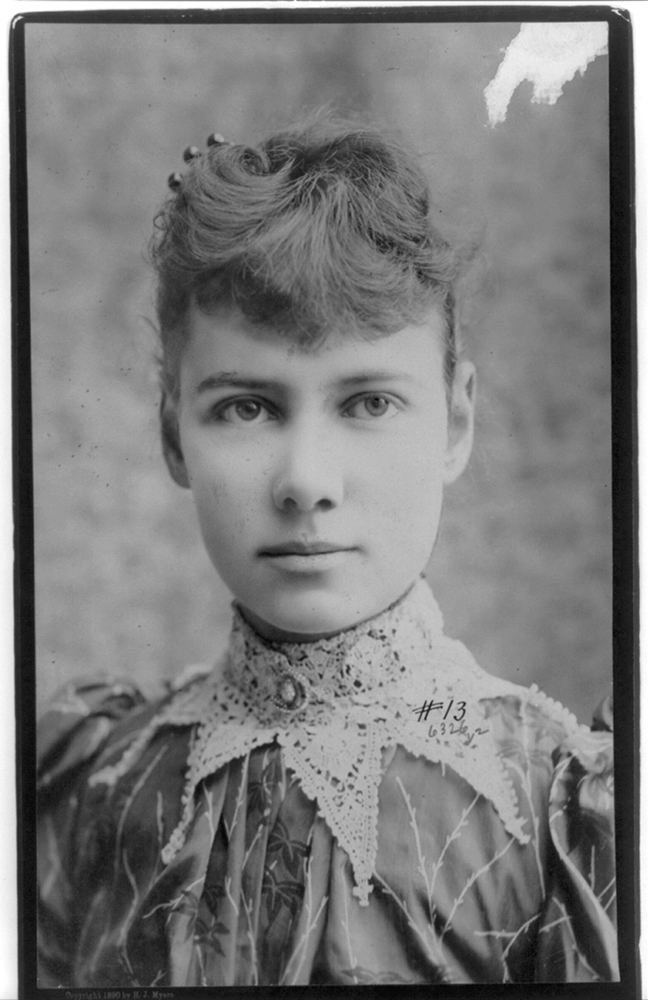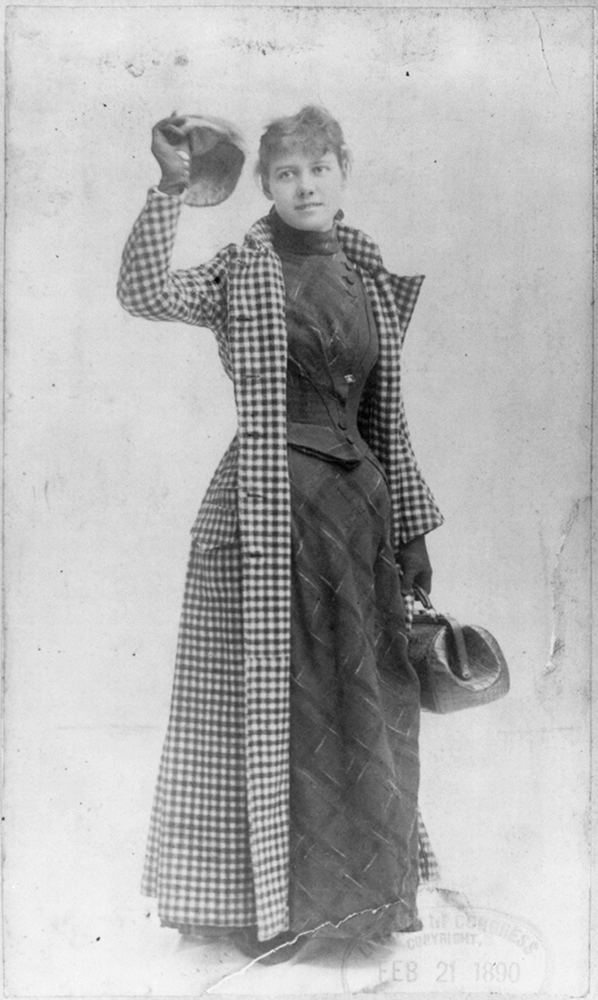This post is an edited excerpt of “Nellie Bly: Pioneer Journalist Extraordinaire,” which appeared in the summer 2017 issue of Western Pennsylvania History Magazine.
Learn more about Western Pennsylvania native Nelly Bly in the Pittsburgh: A Tradition of Innovation exhibition.

French author Jules Verne’s adventure novel, “Around the World in Eighty Days,” was published in 1873, when Nellie Bly was nine years old. Verne’s popular story highlighted the fictional character Phileas Fogg, who circumnavigated the globe in less than three months. Inspired by Jules Verne’s novel, Bly came up with another groundbreaking story idea during her career as a journalist.
“I approached my editor [at The World newspaper] rather timidly on the subject,” Bly said. “I was afraid that he would think the idea too wild and visionary.”1 Nevertheless, she pitched traveling around the world to beat Fogg’s 80-day world record, and she hoped The World would host her. Cockerill informed her the idea had already been bandied around the newsroom and said the assignment was best suited for a male reporter who wouldn’t need to be chaperoned and wouldn’t drag along loads of suitcases. Bly protested and promised she would travel light. In time, her enthusiasm and determination prevailed, and the assignment was hers.
On Nov. 14, 1889, Bly waved goodbye to family and friends from the New Jersey Hoboken Pier aboard the Augusta Victoria steamer. Traveling by steamships and trains, her journey sent her around the world from America to England, France, Italy, Egypt, Yemen, Sri Lanka, Malaysia, Singapore, China, Japan, and back to a port in San Francisco. She then traveled by train across the U.S., with four major stops including Harrisburg, Pa., before arriving back in New Jersey on Jan. 25, 1890.

In total, Bly traveled for 72 days, beating the record of Phileas Fogg as well as a surprise competitor, The Cosmopolitan writer Elizabeth Bisland, who attempted to make the same journey going in the opposite direction. But Bly won and became a world celebrity. The World’s circulation soared, and fame for Bly followed in the form of paid speaking engagements and even a “Round the World with Nellie Bly” board game.
Like other ventures, Bly compiled her articles into the book, “Around the World in Seventy-Two Days,” published in 1890 by The Pictorial Weeklies Company.2 Fame followed, and Nellie Bly was a celebrity reporter known all over the world. But when her editors at The World did not give her a raise or even a bonus for her work after she returned, she up and quit. At the time, Bly was 26 years old, single, and one of the most famous women in the world.
Today, Nellie Bly’s techniques of insinuating herself into a story (sometimes called gonzo or immersion journalism) are frowned upon as lacking in transparency. But Bly’s stories were popular in her day, and her many articles helped highlight critical issues of reform. The courageous Bly got her first break in newspaper writing when she railed against Erasmus Wilson’s articles about the misogynistic “Women’s Sphere.” Yet, there were newspapermen such as Erasmus Wilson, George Madden, John Cockerill, Morrill Goddard, and Arthur Brisbane who helped and guided Bly throughout her career.
Nellie Bly lived life fully and demonstrated how the power of the pen can create positive change. She was one of the earliest muckraking journalists of her time, finding a place in history alongside noted writers such as Jacob Riis, Upton Sinclair, Lincoln Steffens, Ida Tarbell, and Ida B. Wells. Her prolific, colorful, and thought-provoking pieces shed light on many social injustices of her era as she valiantly paved the way for future journalists.
1. Jean Marie Lutes, Introduction; Maureen Corrigan, Foreword; and Nellie Bly, Nellie Bly—Around the World in Seventy-Two Days and Other Writings (New York: Penguin, 2014), 146.
2. Mary Mark Ockerbloom, editor, “A Celebration of Women’s Writers” commenting on the book Nellie Bly, “Six Months in Mexico” (New York: American Publishers Corp., 1888).
Ellen Mahoney is the author of Nellie Bly and Investigative Journalism for Kids—Mighty Muckrakers from the Golden Age to Today (Chicago Review Press, 2015). She is also the author of Gandhi for Kids—His Life and Ideas (Chicago Review Press, 2016) and coauthor with former astronaut Edgar Mitchell of Earthrise: My Adventures as an Apollo 14 Astronaut (Chicago Review Press, 2014). Mahoney teaches Reporting-2 at the University of Colorado Boulder in the College of Media, Communication and Information.

